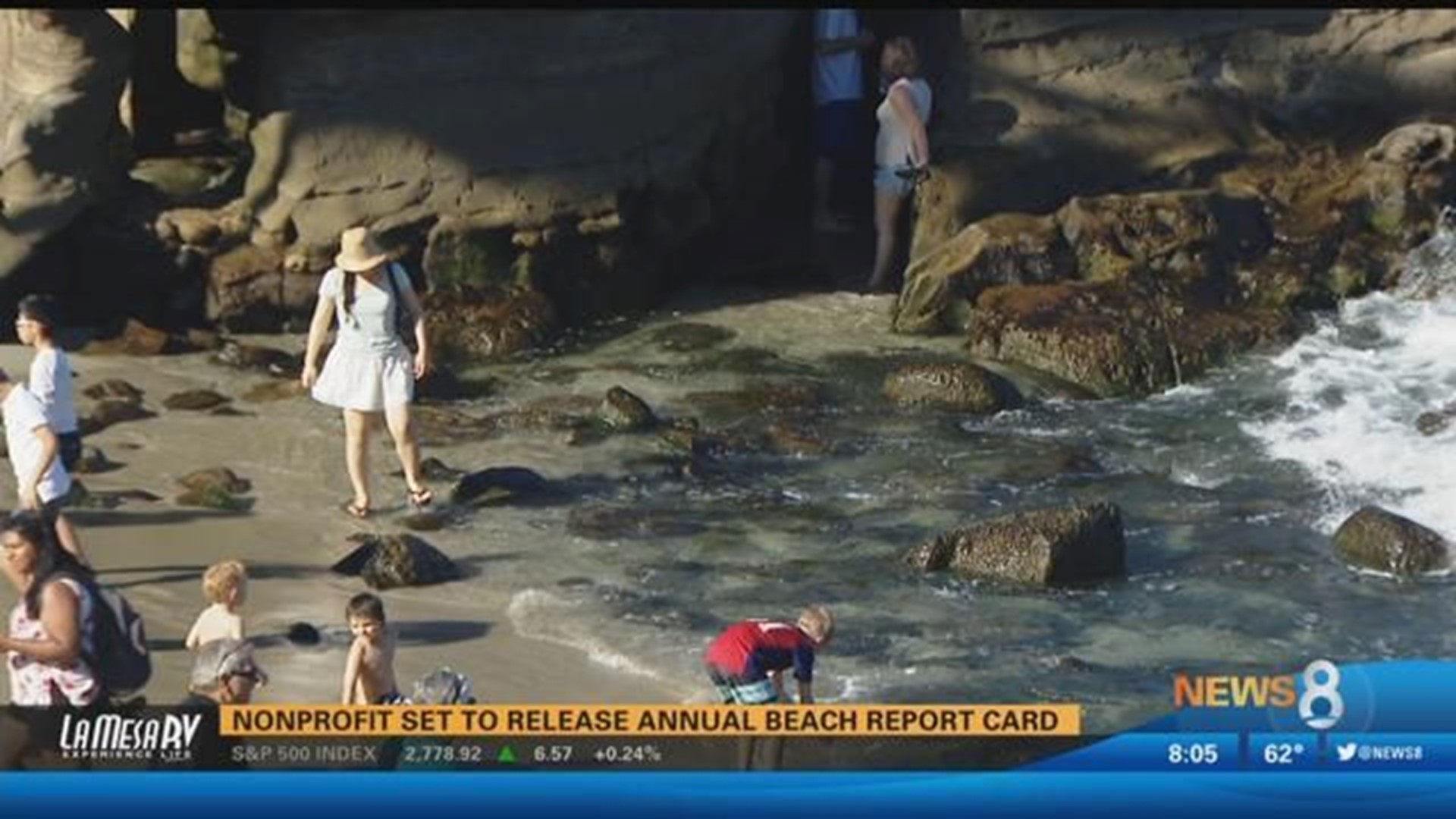SAN DIEGO (NEWS 8/CNS) - With less rain, bacterial pollution at San Diego's beaches dipped dramatically in 2017-18, according to Heal the Bay’s 28th annual Beach Report Card, which the nonprofit released Thursday.
According to the report, some 95 percent of the beaches monitored in Southern California earned A grades during the busy summer season, a 5 percent uptick from the reporting period’s five-year average.
San Diego County scored top summer marks, with 100 percent of 69 monitored sites receiving A or B grades. But its wet-weather grades fell significantly below the five-year average. On the positive side, several SoCal beaches named as 2016-17 Beach Bummers fell off this year’s list of the most-polluted beaches in the state. Among those showing marked improvement: La Jolla Cove and historically troubled Mother’s Beach in Marina Del Rey.
You can get a county-by-county, beach-by-beach breakdown in the full report.
In another positive sign, a record 37 beaches in California made the Heal the Bay Honor Roll this year – meaning they are monitored year-round and score perfect A-plus grades each week during all seasons and weather conditions. Despite the good news for beachgoers, Heal the Bay scientists remain concerned about the long-range prognosis for beach water quality – given our state’s boom-and-bust rain cycles.
Last year, Heal the Bay released a "Beach Bummer List" that gave La Jolla Cove a "D" grade. It was the fifth most polluted beach in California. They rate beaches based on their water quality.
Despite the encouraging news overall in dry weather, stubborn pockets of chronic pollution still plague several popular beaches locally. Southern California accounted for three sites listed on Heal the Bay’s infamous Beach Bummer List, which ranks the 10 most polluted beaches in the state:
- No. 1- Poche Beach at ocean outlet, San Clemente This O.C. site is the single most polluted beach in the state, according to the report. It’s a “point zero” site, meaning weekly samples are taken directly where a stream, creek or stormdrain discharges to the sea. Elevated pollution from Poche Creek is no doubt leading to bacterial exceedances.
- No. 7 – Santa Monica Pier Moist conditions, flocks of birds and stormdrain runoff are likely culprits. Construction has begun on a 1.6-million gallon stormwater storage tank that should help.
- No. 9 – Cabrillo Beach, harbor side, San Pedro This site returns to the Bummer List after a twoyear absence. Lack of circulation means unsafe levels of bacteria. The County continues to finetune a circulation device and bird deterrents.
Several other Southern California beaches received annual grades of C for bacterial exceedances, warranting caution. These hot spots include Monarch Beach in Orange County, San Clemente Pier in Orange County and Topanga State Beach in Los Angeles County.
“A day at the beach shouldn’t make anyone sick,” said Dr. Shelley Luce, president and CEO of Heal the Bay. “We are glad to see water quality improving, but there are no guarantees. Anyone headed to the beach should visit Heal the Bay’s new website to get the latest grades and predictions.”
Swimming at a beach with a water quality grade of C or lower greatly increases the risk of contracting illnesses such as stomach flu, ear infections, upper respiratory infections and rashes.
On Thursday, local governmental stakeholders will address water quality monitoring of local beaches affected by sewage spills from the Tijuana River Valley during a meeting.
The citizens forum will be held by the International Boundary and Water Commission, a bi-national agency charged with overseeing efforts to stem ongoing pollution.
Keith Kezer and Dominique Edwards of San Diego County's Department of Environmental Health will provide an update on year-round water quality monitoring at South Bay beaches. Their presentation will also include analysis of interactions between the Tijuana River, Tijuana Slough National Wildlife Refuge and Pacific Ocean.
In a separate discussion, City Planner Jim Nakagawa addressed the city of Imperial Beach's general plan and Local Coastal Program, which were adopted in 1994 in response to states laws that require local authorities address climate change impacts.
RELATED COVERAGE

